SOME PEOPLE MAKE MODEL AIRPLANES: I BUILD BULKHEADS
At least that's how I feel today. I am wondering when this will EVER get done at the pace my day job dictates.
Anyway, tonight I basically finished the after bomb-bay bulkhead, except for a million other items that will have to be added when the space is complete, such as control cables. electrical wiring, and the bomb bay door actuators.
In general, I think the left rear fuel pump station, portable oxygen charging station, and "relief tube" came out OK. See below.
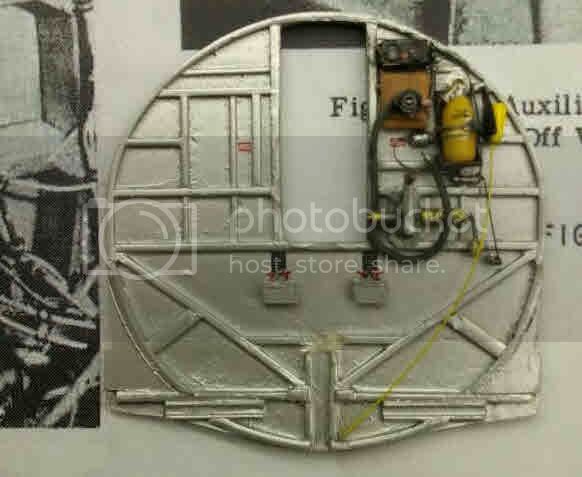
I was quite happy with how the pump came out. This shot gives an angled view with the catwalk in place.
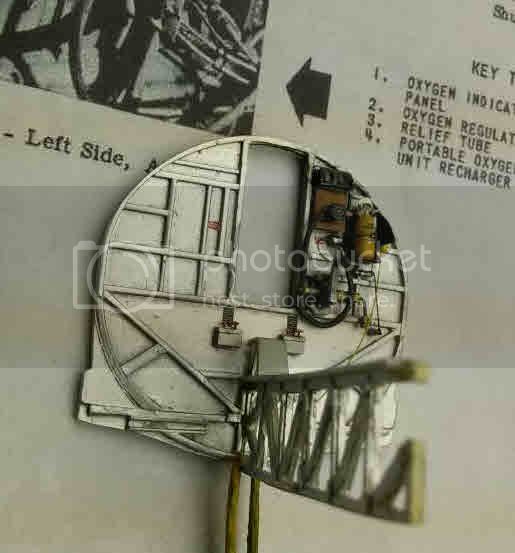
The manual pump handle was scrounged from the spare parts box: it's the inertial starter handle from the venerable Monogram TBD kit. The other pump bits and pieces come from those helpful True Details connector sets I flogged in an earlier post.
I took a bit of artistic license with the dangling pump connector off to the right. Reason is that in the final build I am going to show the hose it connects to coiled and lashed to the catwalk. See below.
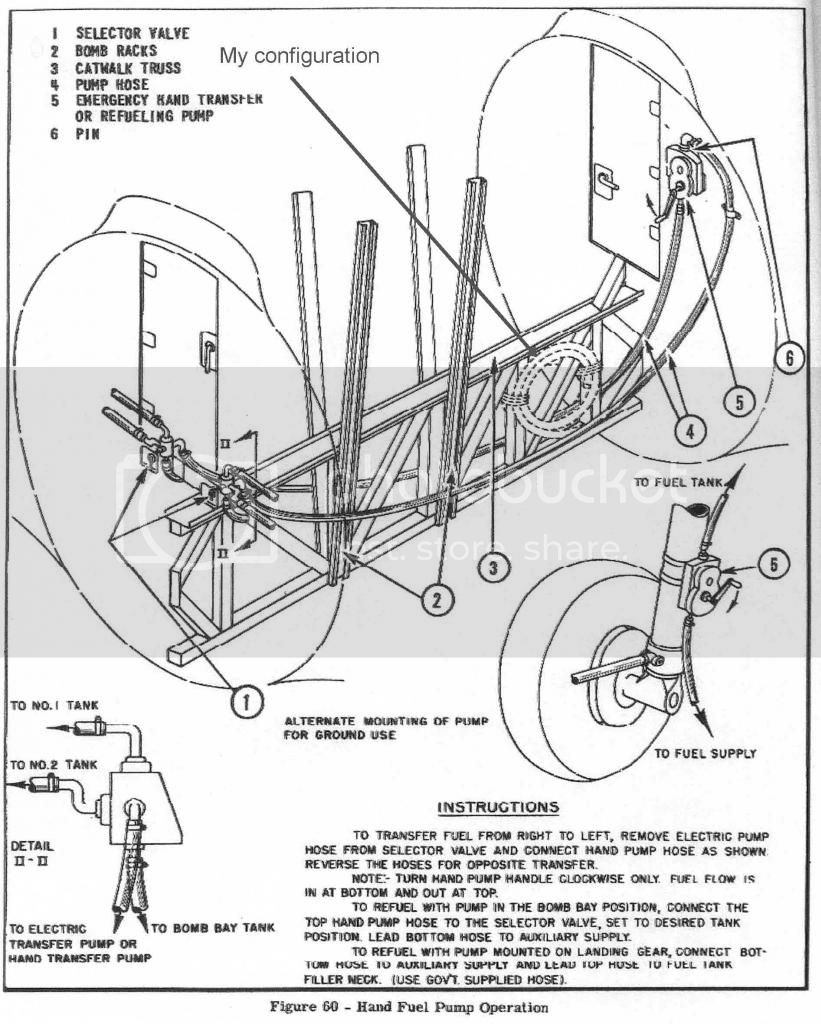
You will notice that the diagram configuration showing the pump is different from the photos. Well, we all know configurations changed over time. As for the hose, I figure there is no way it would have been fully deployed during a mission: it must have been stowed curled up during missions, available in the event the crew got REALLY desperate to transfer fuel manually. (Seems like quite a task while dodging fighters on the way back from "Target Germany"). Besides, ah, bombs are supposed to go in here.
I was originally going to curl the hose to the catwalk at this point in the build, but realized it will have to be offset from the door actuator drive-shaft that runs fore and aft under the catwalk where the hose curls around the top. Obviously, the shaft has to be installed first, and a clearance with the hose set up.
Which brings me to those little boxes and T-handles under the after bulkhead door. After doing all this work on the pump and hose, how could I leave out the valves to the fuel tanks? See below.
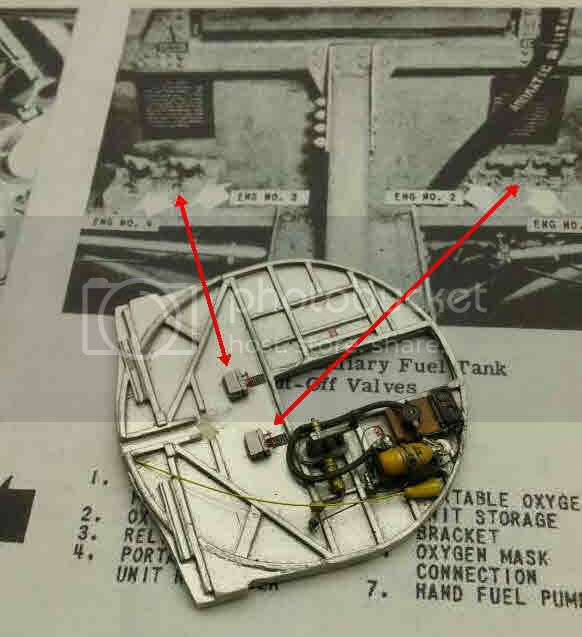
My scratch-built ones are a bit crude, but I'm not going for elegance in this space. Just look how grimy the space is in the maintenance manual picture.
Finally, the relief tube, "located behind the dome light in the left bomb bay."
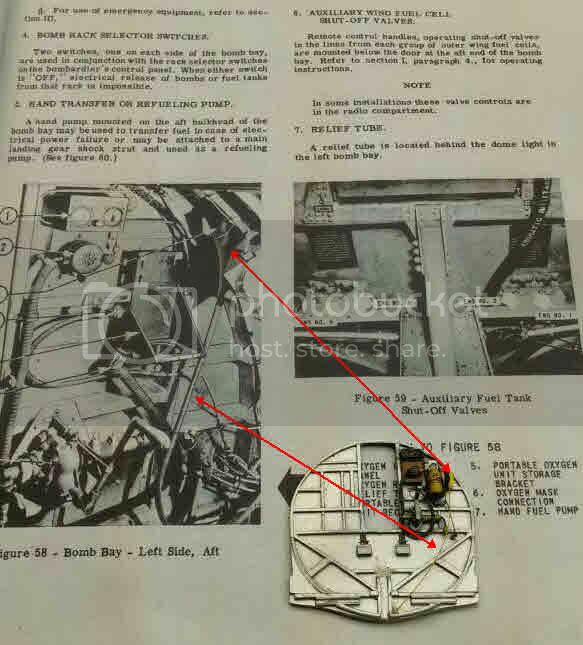
I took artistic licence again and decided to paint the tube and funnel at the top yellow: it seemed somehow appropriate. I do note that the hose in the picture is fairly light in color, so why not? Another bit of history lost in the "mists of time."
I do not know exactly where the relief tube exited the aircraft, so opted to place it at the bottom of the catwalk near the centerline. That's an "educated guess" because I know talking with the Hullar crew gunners when researching
Half A Wing that there were engineering problems with this configuration.
Specifically, Merlin Miller, the tail gunner, told me a story that one of the crew just
had to go, and when he used the tube the urine splashed all over the ball turret, and got
inside the turret. He said everyone's earphones were ringing from the ball gunner's cursing when he realized why he suddenly got wet.
So, I guess the relief tube should be classified as a piece of "emergency equipment."
I will next be moving to the rear of this part to do the forward bulkhead of the radio room. Then I will return to the bomb-bay and side walls, etc. I close with a "before and after" shot of the after bulkhead.
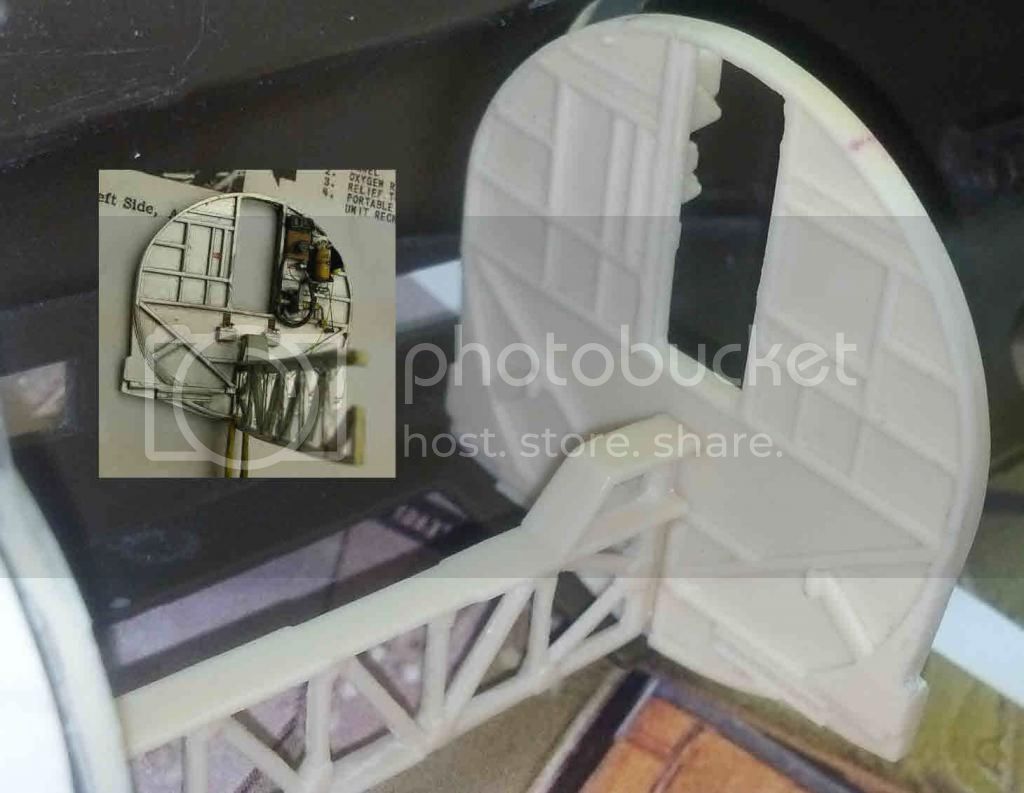
 lots of ideas for when I get to one of mine.
lots of ideas for when I get to one of mine. 
 lots of ideas for when I get to one of mine.
lots of ideas for when I get to one of mine. 


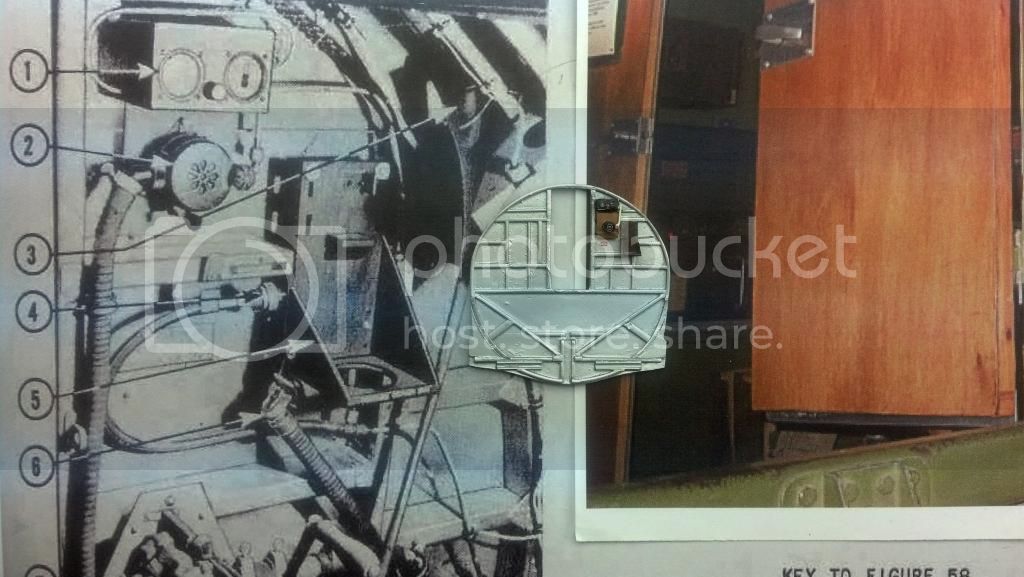
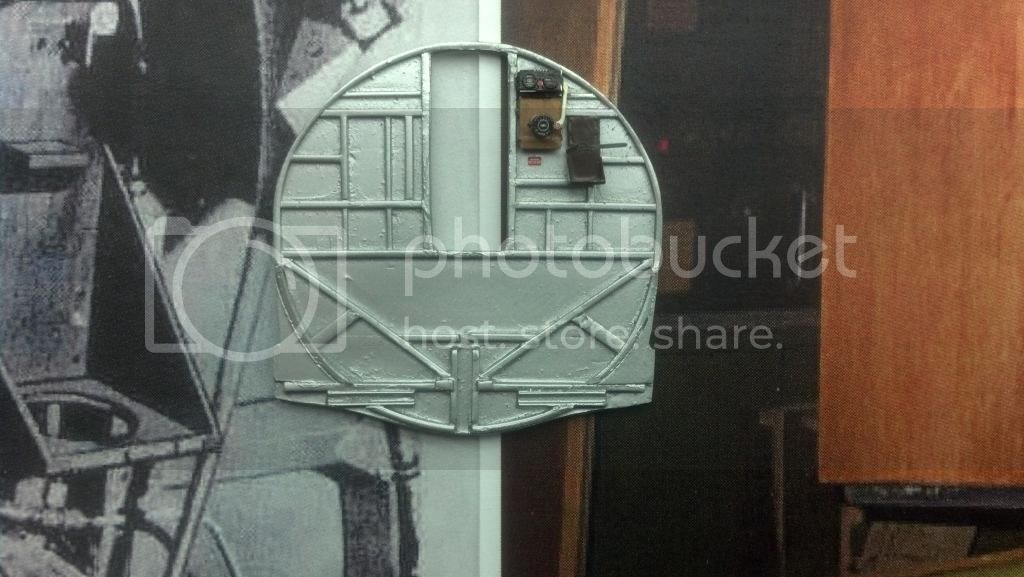



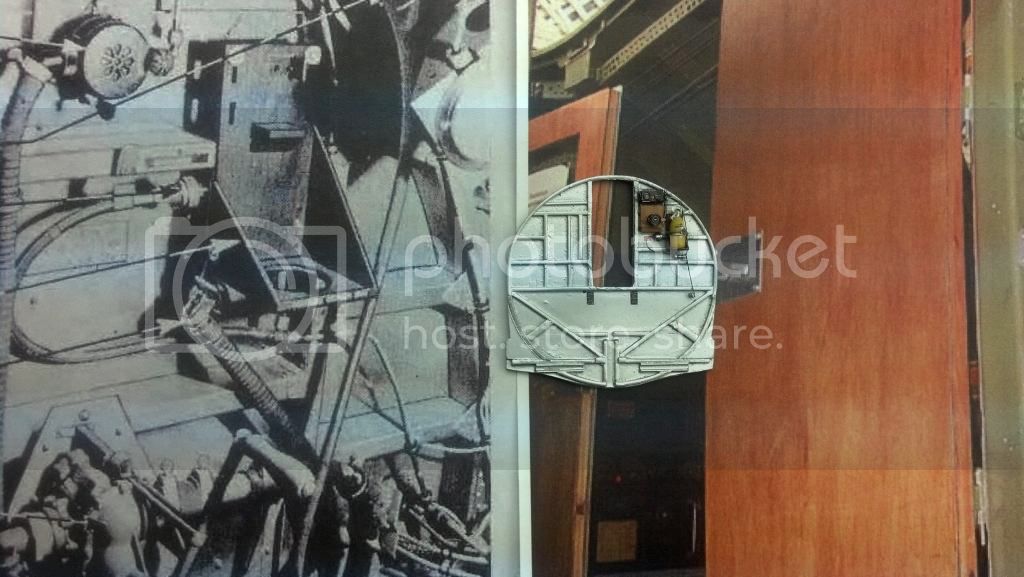


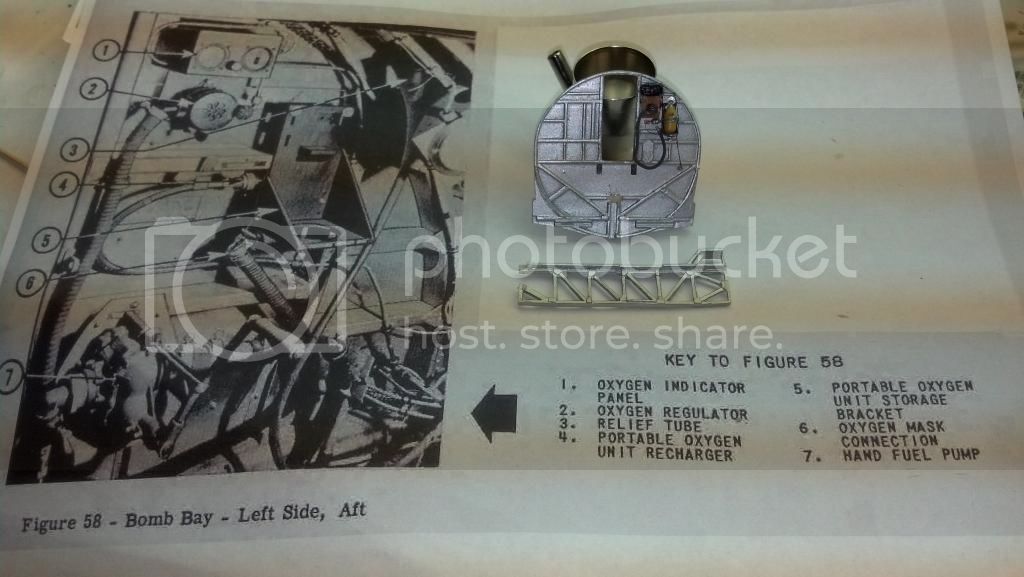
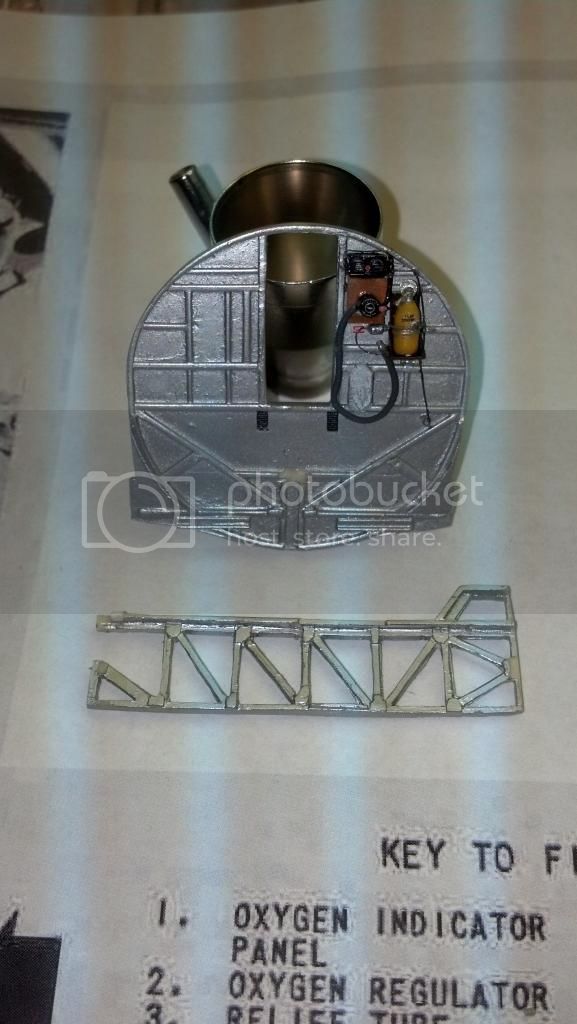















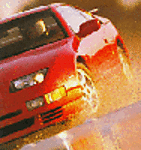






 Plus, I'm a 1/48 man.
Plus, I'm a 1/48 man. 

Plus, I'm a 1/48 man.

